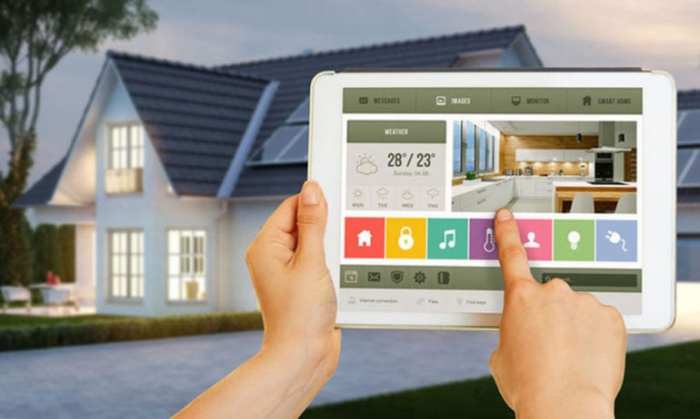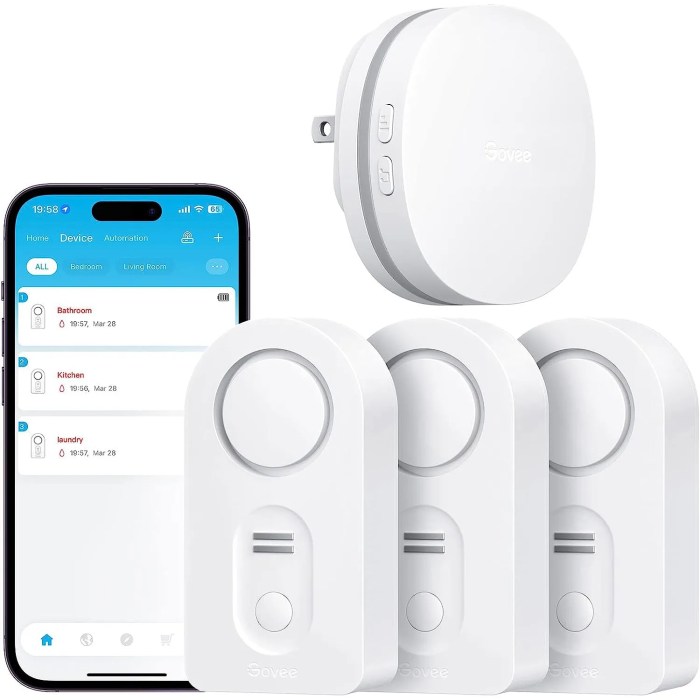Embark on a journey through the world of smart home devices with Best Smart Home Devices for Beginners, exploring how these innovative technologies can revolutionize your living space. From convenience to security, uncover the endless possibilities that await you in this evolving landscape.
Introduction to Smart Home Devices

Smart home devices are gadgets or appliances that can be controlled remotely or automated to perform tasks within your home. These devices are designed to make your life easier by increasing convenience, saving energy, and enhancing security for beginners who are new to the smart home concept.
Examples of Common Smart Home Devices for Beginners
- Smart Bulbs: These bulbs can be controlled using a smartphone app or voice commands, allowing you to adjust the brightness and color to create the desired ambiance.
- Smart Plugs: With smart plugs, you can remotely control the power supply to devices plugged into them, turning them on or off as needed.
- Smart Thermostats: These devices help regulate the temperature in your home, learning your preferences over time and adjusting settings to save energy.
- Smart Security Cameras: These cameras provide real-time monitoring of your home, sending alerts to your phone in case of any suspicious activity.
- Smart Speakers: Devices like Amazon Echo or Google Home allow you to play music, control other smart devices, and get information through voice commands.
Essential Smart Home Devices for Beginners

Starting your smart home journey with essential devices is crucial to understanding the basics of home automation and enjoying its benefits. These devices are user-friendly, affordable, and offer a great entry point into the world of smart technology.
Smart Speakers
Smart speakers like Amazon Echo and Google Home are excellent starting points for beginners. They can play music, set reminders, answer questions, and control other smart devices in your home with just your voice.
Need a smartphone that charges quickly to keep up with your busy lifestyle? Discover our selection of Smartphones with the Fastest Charging Speeds that will ensure you never run out of battery when you need it the most.
Smart Bulbs
Investing in smart bulbs from brands like Philips Hue or LIFX allows you to control your lighting from anywhere using a smartphone app. You can adjust brightness, color, and even set schedules to automate your lighting based on your preferences.
Looking for a budget smartphone that offers top-notch performance? Check out our list of Budget Smartphones with the Best Performance that won’t break the bank but still deliver great results.
Smart Plugs
Smart plugs such as TP-Link Kasa or Wemo Mini enable you to turn any regular appliance into a smart device. You can remotely control the power supply to these devices, schedule on/off times, and monitor energy usage to save on electricity bills.
Smart Thermostats
A smart thermostat like Nest or ecobee helps you regulate your home’s temperature more efficiently. You can create heating and cooling schedules, adjust settings remotely, and even save money on energy costs by optimizing your HVAC system.
Smart Security Cameras, Best Smart Home Devices for Beginners
Enhance the security of your home with smart cameras like Arlo or Ring. These devices offer live streaming, motion detection, and two-way audio communication, allowing you to monitor your property from anywhere and receive alerts in case of suspicious activity.
Are you an audiophile searching for the perfect pair of over-ear headphones? Look no further than our guide to the Best Over-Ear Headphones for Audiophiles that will elevate your listening experience to a whole new level.
Setting Up Your Smart Home

Setting up your smart home can seem like a daunting task, especially for beginners. However, with the right guidance and tips, you can easily create a seamless and connected smart home environment. Below are the steps to set up smart home devices for beginners, along with tips to ensure smooth connectivity between devices and how to overcome common challenges during the setup process.
Steps to Set Up Smart Home Devices
- 1. Choose a central hub or smart speaker: Select a central device that will control all your smart home devices, such as a smart speaker like Amazon Echo or Google Home.
- 2. Connect your devices to the hub: Follow the manufacturer’s instructions to connect each smart device to your central hub or smart speaker.
- 3. Download the corresponding apps: Install the apps for each smart device on your smartphone or tablet to control them remotely.
- 4. Set up routines and schedules: Create routines and schedules within the smart home apps to automate tasks and make your home more efficient.
- 5. Test the connectivity: Ensure that all your devices are connected properly and can communicate with each other effectively.
Tips for Seamless Connectivity
- 1. Ensure strong Wi-Fi signal: Place your router in a central location to provide a strong and stable Wi-Fi signal to all your smart home devices.
- 2. Use compatible devices: Make sure all your smart home devices are compatible with each other and with your central hub or smart speaker.
- 3. Keep devices updated: Regularly update the firmware and software of your smart devices to ensure optimal performance and security.
- 4. Create dedicated networks: Set up separate networks for your smart home devices to prevent network congestion and interference.
Common Challenges and How to Overcome Them
- 1. Device pairing issues: If you encounter difficulties pairing devices, try resetting them and following the pairing instructions carefully.
- 2. Connectivity problems: Troubleshoot connectivity issues by restarting your router, checking Wi-Fi signal strength, and ensuring devices are within range.
- 3. Compatibility issues: Verify that all your devices are compatible with each other and with your central hub, and consider investing in additional accessories if needed.
- 4. Privacy and security concerns: Protect your smart home network by using strong passwords, enabling two-factor authentication, and regularly updating device software.
Smart Home Integration

Smart home integration refers to the ability of different smart devices to work together seamlessly, creating a connected ecosystem that enhances convenience and efficiency in your home.
Examples of Integrated Smart Home Scenarios
- When your smart security camera detects motion at your front door, it can automatically trigger your smart lights to turn on, deterring potential intruders.
- Your smart thermostat can communicate with your smart blinds to adjust the temperature and lighting in your home based on the time of day, helping you save energy.
- Integrating your smart speaker with your smart appliances allows you to control them with voice commands, making tasks like cooking or cleaning more convenient.
Importance of Compatibility in Smart Home Integration
Compatibility is crucial when choosing smart home devices for integration, as not all devices work well together. It is essential to select devices that use the same communication protocols, such as Wi-Fi, Zigbee, or Z-Wave, to ensure seamless connectivity.
Smart Home Security and Privacy: Best Smart Home Devices For Beginners

In today’s interconnected world, ensuring the security and privacy of your smart home devices is crucial to protect your personal information and maintain a safe environment for you and your family.
Securing Smart Home Devices
- Regularly update firmware and software: Keep your smart home devices up to date with the latest security patches to protect against known vulnerabilities.
- Use strong, unique passwords: Create complex passwords for each device and change them regularly to prevent unauthorized access.
- Enable two-factor authentication: Add an extra layer of security by requiring a second form of verification, such as a code sent to your phone, to access your devices.
- Disable unnecessary features: Turn off any features or settings that you do not use to reduce the attack surface of your smart home devices.
Protecting Privacy with Smart Home Devices
- Review privacy policies: Understand how your data is collected, stored, and shared by reading the privacy policies of your smart home devices and services.
- Limit data sharing: Opt out of data sharing whenever possible and only provide necessary information to protect your privacy.
- Regularly check device permissions: Monitor the permissions granted to your smart home devices and revoke access to any unnecessary data or services.
- Secure your network: Use a strong, encrypted Wi-Fi network and consider setting up a separate network specifically for your smart home devices to prevent unauthorized access.
Role of Encryption and Secure Network Connections
Encryption plays a vital role in securing data transmitted between smart home devices and the cloud, making it unreadable to unauthorized parties.
- Use end-to-end encryption: Ensure that your smart home devices use end-to-end encryption to protect data both in transit and at rest.
- Secure your network: Implement strong encryption protocols, such as WPA3, on your Wi-Fi network to prevent eavesdropping and unauthorized access.
- Consider a VPN: Use a virtual private network (VPN) to encrypt all data transmitted from your smart home devices, adding an extra layer of security.
In conclusion, Best Smart Home Devices for Beginners offers a glimpse into the future of home automation, where simplicity meets sophistication. With a range of devices and integration options, transforming your living space has never been more accessible. Discover the endless potential of smart living today.